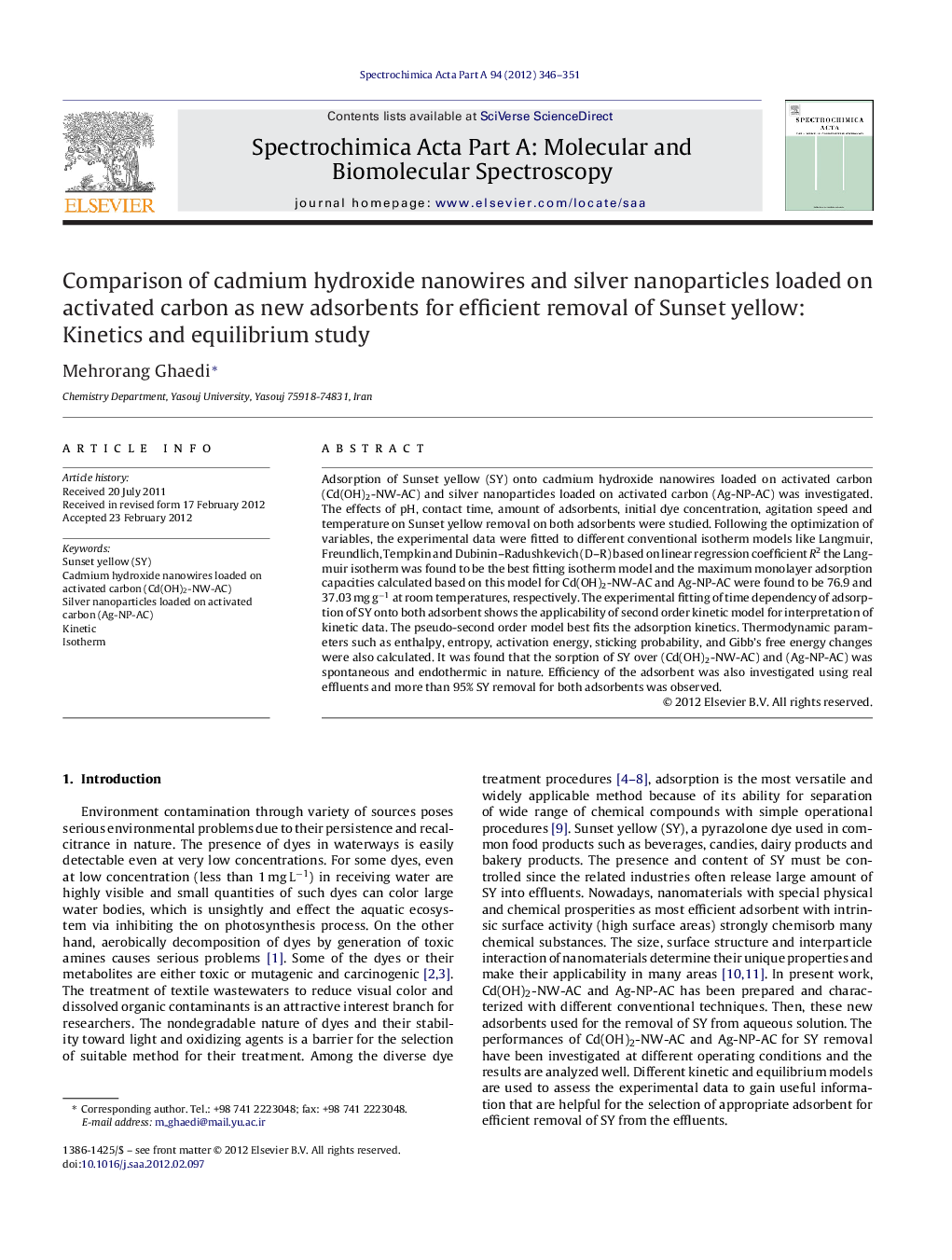| Article ID | Journal | Published Year | Pages | File Type |
|---|---|---|---|---|
| 1231441 | Spectrochimica Acta Part A: Molecular and Biomolecular Spectroscopy | 2012 | 6 Pages |
Adsorption of Sunset yellow (SY) onto cadmium hydroxide nanowires loaded on activated carbon (Cd(OH)2-NW-AC) and silver nanoparticles loaded on activated carbon (Ag-NP-AC) was investigated. The effects of pH, contact time, amount of adsorbents, initial dye concentration, agitation speed and temperature on Sunset yellow removal on both adsorbents were studied. Following the optimization of variables, the experimental data were fitted to different conventional isotherm models like Langmuir, Freundlich, Tempkin and Dubinin–Radushkevich (D–R) based on linear regression coefficient R2 the Langmuir isotherm was found to be the best fitting isotherm model and the maximum monolayer adsorption capacities calculated based on this model for Cd(OH)2-NW-AC and Ag-NP-AC were found to be 76.9 and 37.03 mg g−1 at room temperatures, respectively. The experimental fitting of time dependency of adsorption of SY onto both adsorbent shows the applicability of second order kinetic model for interpretation of kinetic data. The pseudo-second order model best fits the adsorption kinetics. Thermodynamic parameters such as enthalpy, entropy, activation energy, sticking probability, and Gibb's free energy changes were also calculated. It was found that the sorption of SY over (Cd(OH)2-NW-AC) and (Ag-NP-AC) was spontaneous and endothermic in nature. Efficiency of the adsorbent was also investigated using real effluents and more than 95% SY removal for both adsorbents was observed.
Graphical abstractFigure optionsDownload full-size imageDownload as PowerPoint slideHighlights► Sunset Yellow widely appeared in food industries. ► These two net adsorbent with a simple procedure prepared in laboratory and characterized efficiently. ► This for the first time that these new adsorbent for dye removal. ► The proposed adsorbents have high adsorption capacity and are applicable for removal of SY from various real samples in short time with high removal percentage. ► These new adsorbent are reusable for at leas 25 time without significant change in their removal efficiency.
